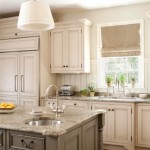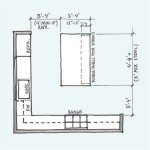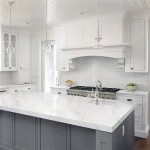Top Mount Single Bowl Kitchen Sink: A Comprehensive Guide
The kitchen sink is an indispensable component of any culinary space. Choosing the right sink requires careful consideration of various factors, including size, material, style, and installation method. Among the diverse options available, the top mount single bowl kitchen sink remains a popular choice for its ease of installation, practicality, and functionality. This article provides a detailed examination of top mount single bowl kitchen sinks, exploring their advantages, disadvantages, materials, installation process, maintenance, and key considerations for selecting the optimal sink for specific needs.
A top mount sink, also known as a drop-in or overmount sink, is designed to be installed from above the countertop. The sink's rim rests on the countertop surface, creating a visible lip. This installation method simplifies the process, making it a favorable choice for both DIY enthusiasts and professional installers. Single bowl sinks feature a single, undivided basin, offering ample space for washing large pots, pans, and dishes. The combination of top mount installation and a single bowl design provides a practical and versatile solution for a wide range of kitchen configurations.
Advantages of Top Mount Single Bowl Kitchen Sinks
Top mount single bowl kitchen sinks offer several distinct advantages that contribute to their widespread appeal. These benefits relate to ease of installation, cost-effectiveness, design versatility, and maintenance.
Simplified Installation: The primary advantage of top mount sinks lies in their relatively straightforward installation process. Unlike undermount sinks, which require precise countertop cutouts and specialized mounting hardware, top mount sinks simply drop into a pre-cut hole in the countertop. The rim of the sink rests on the countertop, providing a secure and stable fit. This ease of installation reduces labor costs for professional installations and makes it a feasible option for homeowners undertaking DIY kitchen renovations. The installation process typically involves applying a sealant around the edge of the sink to prevent water leakage and securing the sink with clips or brackets from underneath.
Cost-Effectiveness: Top mount sinks are generally more affordable than undermount or farmhouse sinks. This is due in part to the simpler manufacturing process and the reduced labor required for installation. The lower cost makes top mount sinks an attractive option for budget-conscious homeowners or those undertaking large-scale kitchen renovations where cost savings are essential. The savings can be allocated to other aspects of the kitchen remodel, such as high-quality faucets, durable countertops, or upgraded appliances.
Design Versatility: While often perceived as a more traditional style, top mount sinks are available in a wide variety of materials, shapes, and sizes, allowing for considerable design flexibility. They can be integrated into various kitchen styles, from classic to contemporary. The visible rim of the sink can also serve as a decorative element, complementing the countertop material and overall kitchen aesthetic. The availability of different bowl depths and configurations allows homeowners to choose a sink that meets their specific needs and preferences. For example, a deeper bowl is suitable for households that frequently wash large items, while a shallower bowl may be more convenient for smaller kitchens.
Ease of Maintenance: Top mount sinks are generally easier to maintain than undermount sinks. The visible rim helps to contain spills and prevents water from seeping under the countertop, which can lead to mold and mildew growth. The seamless transition between the sink and the countertop also simplifies cleaning. Food particles and debris are less likely to get trapped in crevices, making it easier to maintain a hygienic kitchen environment. Regular cleaning with mild soap and water is typically sufficient to keep a top mount sink looking its best.
Disadvantages of Top Mount Single Bowl Kitchen Sinks
Despite their numerous advantages, top mount single bowl kitchen sinks also present certain drawbacks that should be considered before making a purchase. These limitations relate primarily to aesthetics, cleaning convenience, and countertop space.
Aesthetic Considerations: The visible rim of a top mount sink can be considered less aesthetically appealing than the clean, seamless look of an undermount sink. Some homeowners find the rim to be visually disruptive and prefer the uninterrupted surface of an undermount installation. This is purely a matter of personal preference and largely depends on the desired style of the kitchen. However, the rim can also be viewed as a design element that adds character and definition to the sink area.
Cleaning Inconvenience: While generally easy to maintain, the rim of a top mount sink can create a small lip where food particles and debris can accumulate. This requires more diligent cleaning to prevent the buildup of grime and bacteria. The rim can also interfere with wiping down the countertop directly into the sink, requiring users to lift debris over the edge. However, this issue can be mitigated by choosing a sink with a low-profile rim or by using a small brush to dislodge any trapped particles.
Countertop Space: The rim of a top mount sink occupies a small amount of countertop space, which can be a concern in smaller kitchens where every inch of workspace is valuable. While the rim is typically not very wide, it can still reduce the available surface area for food preparation and other tasks. This is a trade-off to consider, especially in comparison to undermount sinks, which maximize countertop space by being installed below the surface.
Materials for Top Mount Single Bowl Kitchen Sinks
Top mount single bowl kitchen sinks are manufactured from a variety of materials, each offering different properties in terms of durability, aesthetics, and cost. The most common materials include stainless steel, composite granite, cast iron, and fireclay.
Stainless Steel: Stainless steel is a popular choice for kitchen sinks due to its durability, resistance to corrosion and staining, and affordability. Stainless steel sinks are available in various gauges, with lower gauges indicating thicker steel and greater resistance to denting. The gauge of the steel is a significant factor in determining the sink's durability and noise level. Thicker gauges tend to be quieter and more resistant to damage. Stainless steel sinks are also relatively easy to clean and maintain, making them a practical choice for busy kitchens. However, they can be prone to water spots and scratches, although these can be minimized with proper care and cleaning.
Composite Granite: Composite granite sinks are made from a mixture of granite stone dust and acrylic resins. This material offers excellent durability, scratch resistance, and heat resistance. Composite granite sinks are also available in a wide range of colors and textures, allowing for greater design flexibility. They are generally more expensive than stainless steel sinks, but their enhanced durability and aesthetic appeal make them a worthwhile investment for many homeowners. Composite granite sinks are also relatively quiet, minimizing noise during dishwashing.
Cast Iron: Cast iron sinks are known for their exceptional durability and heat retention. They are typically coated with a layer of enamel, which provides a smooth, non-porous surface that is resistant to staining and chipping. Cast iron sinks are available in a variety of colors, allowing them to be easily integrated into various kitchen designs. However, they are heavy and require strong countertop support. They are also more expensive than stainless steel sinks. The weight of cast iron can also make installation more challenging, often requiring professional assistance.
Fireclay: Fireclay sinks are made from a type of ceramic clay that is fired at high temperatures. This process creates a durable, non-porous surface that is resistant to scratches, stains, and heat. Fireclay sinks are typically more expensive than other types of sinks, but their unique aesthetic appeal and durability make them a popular choice for high-end kitchens. They are also relatively heavy and require strong countertop support. Fireclay sinks offer a classic, timeless look that complements a variety of kitchen styles.
Key Considerations for Selecting a Top Mount Single Bowl Kitchen Sink
Choosing the right top mount single bowl kitchen sink requires careful consideration of several factors, including size, material, bowl depth, accessories, and budget.
Size and Dimensions: The size of the sink should be appropriate for the available countertop space and the needs of the household. Consider the width, depth, and height of the sink to ensure that it fits comfortably within the existing cabinetry and countertop cutout. Larger sinks are suitable for households that frequently wash large items, while smaller sinks may be more appropriate for smaller kitchens or apartments. Careful measurement and planning are essential to ensure a proper fit.
Material and Durability: Select a material that is durable, easy to clean, and resistant to scratches, stains, and heat. Stainless steel, composite granite, cast iron, and fireclay are all viable options, each with its own set of advantages and disadvantages. Consider the long-term maintenance requirements and the overall aesthetic of the kitchen when making a decision. The frequency of use and the type of items typically washed in the sink should also influence the choice of material.
Bowl Depth: The depth of the sink bowl affects its capacity and usability. Deeper bowls are better suited for washing large pots and pans, while shallower bowls may be more convenient for everyday tasks such as washing dishes and rinsing vegetables. Consider the average size of the items that will be washed in the sink and choose a bowl depth that is appropriate for those needs. A deeper bowl can also help to contain splashes and spills, keeping the surrounding countertop area cleaner.
By carefully evaluating these factors, homeowners can select a top mount single bowl kitchen sink that meets their specific needs and preferences, enhancing the functionality and aesthetics of their kitchen.

Fsd22113 Top Mount Single Stainless Steel Kitchen Sink

Blanco Plenta 6 Single Bowl Stainless Top Mount Kitchen Sink

Fujioh Top Mount Kitchen Sink Single Bowl 630mm King Eco Pte Ltd

Inspirione Top Mount Single Bowl Kitchen Sink 50cm Eezee

Toccata Top Mount Single Bowl Kitchen Sink 3348t 2kd Kohler

Blanco Plenta Single Bowl Stainless Top Mount Kitchen Sink

Fsd21404 Top Mount Single Stainless Steel Kitchen Sink

Rubine Top Mount Single Bowl With Drainer Stainless Steel Sink Urban Series Uniqool

Verse 33 Top Mount Single Bowl Kitchen Sink 20060 1 Kohler

Flavio Single Bowl Kitchen Sink Top Mount Fl 6050t








